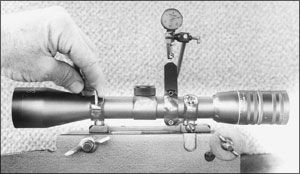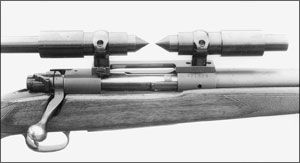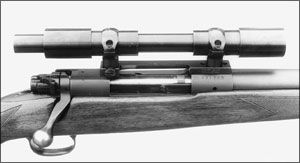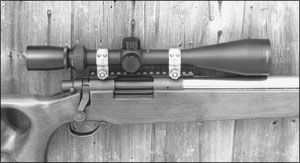As the owner of a firearm test range, I mount dozens of scopes each year. I get to see first hand how they perform, as well as the performance of scopes mounted by others. The two main complaints I hear about scopes usually center around those that fail to remain sighted in or group poorly on target. These complaints are usually very well founded.

Most complaints about scope mounting are the direct result of poor scope-ring alignment and the accuracy-robbing stresses inherent between metal parts. These stresses pull and twist, causing the scope to move and to become misaligned. The scope never really settles down as bullet point-of-impact changes over time or even as a target group is being fired.
Further compounding the problem is the fact that there are perhaps a score of scope base and ring manufacturers, all trying to eliminate tolerance errors in their attempt to match the manufacturing specifications among the myriad of firearms out there being scoped. This is a daunting task, and the manufacturers are often unsuccessful.
Identifying and SolvingThe Alignment Problem
In essence, what is happening as we mount a scope is a stacking of tolerances—the scope base to the firearm receiver, the rings to the base, and the scope to the rings. As close as today’s scope and firearms manufacturers have come in the elimination of tolerance errors, scope-ring alignment should be a fundamental part of scope mounting.
There is a sure way to precisely check the coaxial alignment of a pair of mounted scope rings. This is accomplished by using a set of sleeved scope-alignment rods. If used correctly, these precision alignment rods will readily show the slightest alignment error. (Alignment rods are available from Brownells.)

Using Scope-Alignment Rods
As sure as you may feel about your ability to mount a scope correctly, you should always follow the scope manufacturer’s instructions in mounting the base and rings. Mounting systems vary, so pay close attention, particularly if you are not totally familiar with the system you’re installing. Be sure the base doesn’t rock or shift as it is pressed against the receiver. Then tighten the base screws alternately and evenly. Be sure no long screws protrude through the threaded holes in the receiver. Then, with the base mounted, follow the directions for mounting the rings. Where there are laterally opposing adjustment screws for windage adjustment on the scope base—like those on Leupold, Redfield, Conetrol, and others—try to have the rings evenly spaced from right to left. Don’t tighten these screws firmly at this time.
The two alignment rod sleeves can now be placed in the scope-ring saddles. They fit both 30mm and one-inch rings. Then place the scope ring caps in position and tighten the screws with moderate torque.
Both alignment rods are then placed in position with the pointers midway between the sleeves, barely touching. Then you can see if coaxial alignment exists. The two rod pointers should come together to ensure a coincident axis. If they aren’t coinciding, see if the movable rear ring can be moved right or left to improve the alignment. Once the pointers seem to be in near perfect contact, it’s time to test if the rings are truly coaxial. This is done by removing the shorter alignment rod, and checking to see if the longer alignment rod will enter the opposite sleeve. If this can be accomplished, there is absolutely no misalignment of the two rings. To my knowledge, there is no other way to check the precise coincident axis between the two rings.

It’s worth noting that 0.001 inch of scope movement will cause about one minute of angle of scope reticle movement on the target. So it’s easy to see why a poorly mounted scope, inherent with stress, will leave you pulling your hair.
Making Corrections for Poor Ring Alignment
Where minimal misalignment is present between the rings, a simple reversal of the rings by rotating them 180 degrees often produces better alignment. Base shimming can also used, but I believe this is a compromising effort—a makeshift fix at best.
Using the scope-alignment rods to manipulate the scope rings can do wonders to align the rings. Here the rods are installed with points toward one another, and a reasonable manipulative force is used on the offending ring (or rings) to bring the pointers together. This can be performed on both rings in moderation. It actually reduces stresses as the rings are aligned. But don’t attempt too great a correction in this way.
Brownells also offers a scope-ring alignment lap. This tool actually removes metal by lapping and fitting the rings. Clymer Reamers offers what they call a “ring-alignment reamer” for the same purpose. This dual-end reamer is clamped lightly into the rings and rotated to align them.

Conclusions
In my experience, only a relatively small percentage of scope rings are mounted in true alignment. This results in stresses that cause accuracy deficiencies. Fortunately, scope rings can readily be checked for precise alignment, and are quite easily corrected where misalignment exists. Where the best accuracy is sought and scopes are expected to remain sighted, there’s no substitute for the proper alignment tools.



























